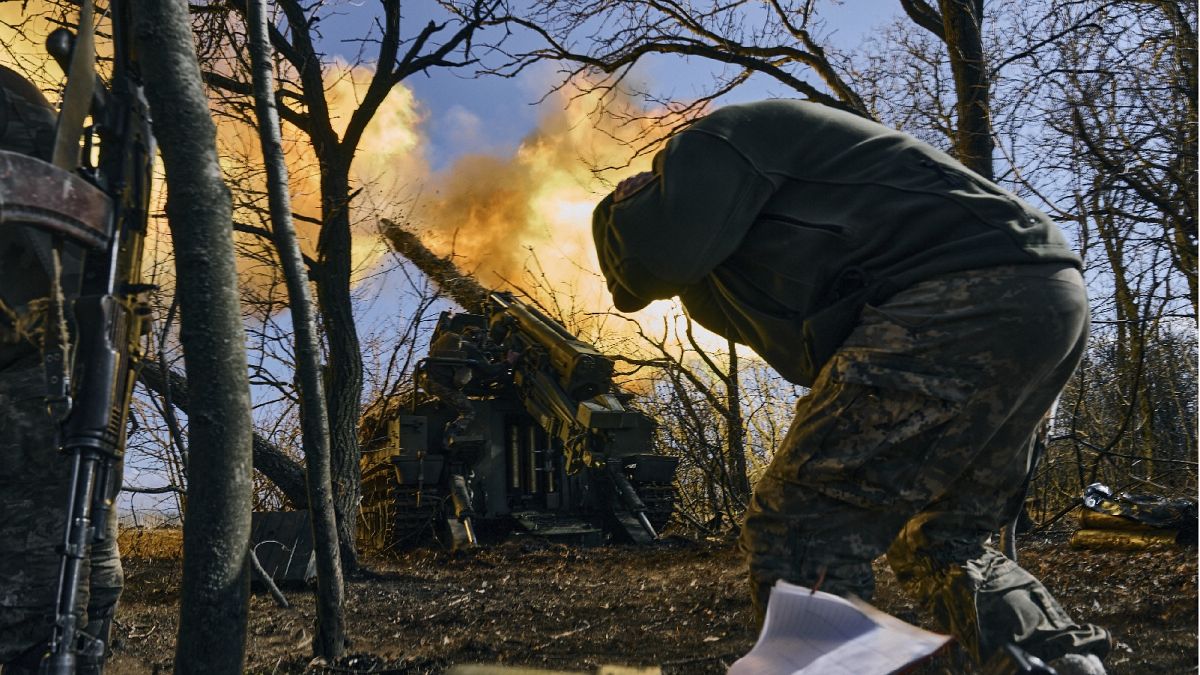Ukraine roughly needs 1 million ammunition rounds, primarily the 155 mm kind, over the next year.
European Union foreign and defence ministers on Monday approved a €2 billion plan to boost ammunition deliveries to Ukraine including through joint purchases.
"It is a good day, today. We have reached a political agreement to send to Ukraine 1 million shells of 155 mm," Estonian Minister of Defence Hanno Pevkur told reporters."There are many details still to solve... If there is a will, there is a way"
Ministers from across the EU backed a three-track proposal unveiled a couple of weeks earlier by the bloc's top diplomat, Josep Borrell, that will see member states commit €1 billion worth of ammunition from their remaining — but quickly depleting stockpiles under track one — then place joint orders for an additional €1 billion under track two.
Ukraine roughly needs 1 million ammunition rounds, primarily the 155 mm kind, over the next year.
The money will be disbursed through the European Peace facility (EPF), an off-budget fund member states can tap into to get reimbursed for some of what they provide Ukraine.
The deal reached in Brussels was welcomed by Ukrainian Foreign Minister Dmytro Kuleba. "I anticipate the swift adoption of big decisions which will bolster Ukraine's capabilities on the battlefield," he wrote on Twitter.
'Force majeure'
However, some question marks — over whether to allow ammunition purchases from non-EU manufacturers and who should conduct negotiations for joint purchases — still remain.
Joint procurement is seen as the best way to boost production in the short term and increase the long-term capacity of the European defence industry — the proposal's third track — as quickly and as cheaply as possible.
Currently, two ways to buy jointly are envisaged.
The first is through the European Defence Agency (EDA) which would fast-track orders for 155 mm ammunition by calling it a case of "force majeure". This would allow it to start negotiations with the industry without first putting out a call for tender.
Seventeen member states and Norway have already committed to going through the EDA.
"This is a significant moment in the EU’s support for Ukraine, European defence cooperation and the EDA," the agency's chief executive Jiří Šedivý said in a statement.
"EDA has created a flexible and open project which allows all Member States to join should they choose and I expect additional countries to come on board within the week. Today we have a framework for delivery – it’s now up to Member States to make use of it and for industry to be able to respond," he added.
The second option on the table is for joint purchases to be done through consortiums of member states composed of at least three countries with one nation leading the negotiations. Germany has already indicated it would open up its procurement projects to other member states.
"The first partners who are interested in joining are Denmark and the Netherlands. But we are also explicitly ready to open up for others," Boris Pistorius, Germany's Defence minister, said on Monday. "Our own contracts are limited, but we are in the process of setting up new ones. By the end of March we will have corresponding offers from the industry and can then act quickly."
An EU official close to the negotiations insisted last week that the two systems could be complementary.
"What we want is to have economies of scale to be in a better position to negotiate with the industry. If we have 20 member states who buy separately, it's not a good negotiation for them when they have to face the industry.
"That's why we want to have a massive demand. And so we think that if at least three member states work together and if one member state as a role of leader, as a nation to procure on behalf of these three at least three member states, I think it's better," the official said.
'Very ambitious timeline'
It is unclear however how much ammunition EU countries can provide Ukraine in the coming months from their own stockpiles and whether the bloc's industry can produce the rest on time.
The EDA is reportedly on track to place the first joint orders by the end of May, according to an official, which described it as "a very ambitious timeline, but at the same time realistic."
The average delivery time currently is just over 12 months, but the hope is that by placing large orders, the industry can rise up and significantly reduce that timeframe.
The European Commission previously estimated that production capacity could grow by at least 17% in a year.
And EU officials insist the bloc is well-placed with 15 companies across 11 member states that are able to produce both the Soviet and Western-style ammunition Ukraine needs.
Asked about whether the EU can meet Ukraine's demands, Borrell also sounded upbeat on Monday, telling reporters: "I am confident, certainly because I am not an optimist. I am an activist."
